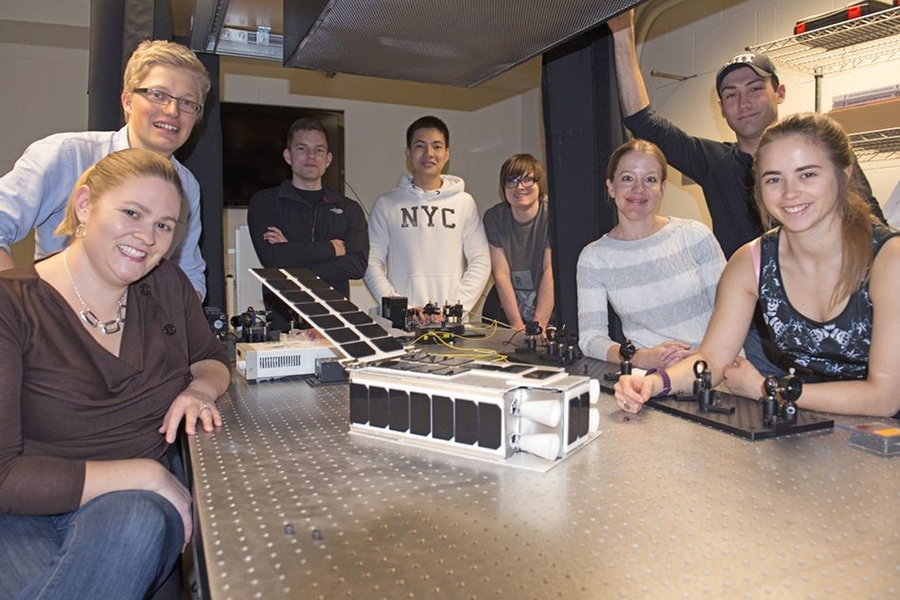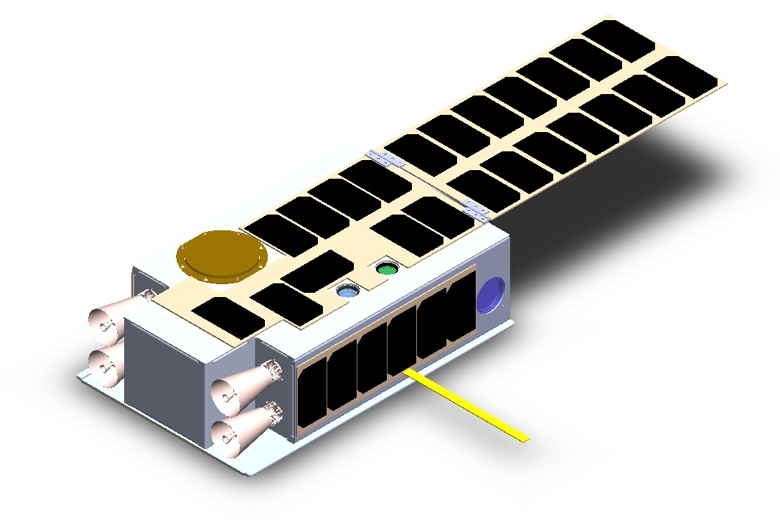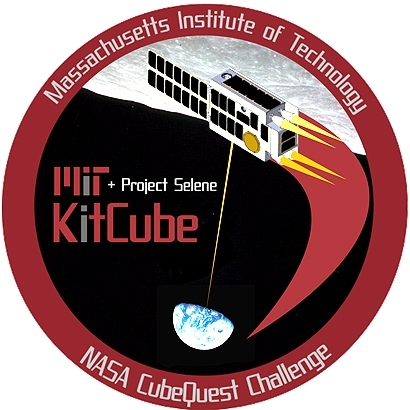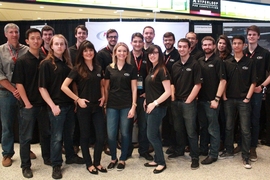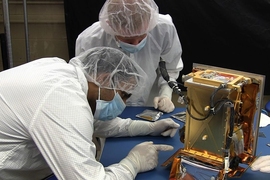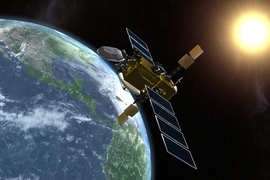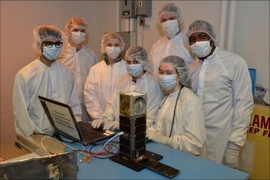An MIT Department of Aeronautics and Astronautics (AeroAstro) student team is a top contender in the NASA CubeQuest Challenge, a competition offering the winners’ projects a ride aboard the Exploration Mission-1 .
Exploration Mission-1 is the first planned flight of NASA’s new heavy-launch Space Launch System (SLS-1) and the second uncrewed flight of the Orion Multi-Purpose Crew Vehicle, the successor spacecraft to both Apollo and the space shuttle. In addition to the opportunity to fly a CubeSat miniaturized satellite into deep space or lunar orbit, NASA also is offering $5 million in prize money for technology demonstration categories such as achieving lunar orbit, the best burst data rate, and advances in navigation, propulsion, and communications. The competition is open to industry as well as educational and research organizations.
The MIT team’s entry, called KitCube, is a backpack-sized satellite that would receive a boost toward lunar orbit on the NASA vehicle, and then be deployed as an independent spacecraft. The name KitCube is derived from the word “kit,” a term for a baby beaver, the beaver being the official MIT mascot. The team notes that its satellite’s deployable solar panel resembles the shape of a beaver’s tail.
New technologies that KitCube will demonstrate include a compact laser communications transmitter that uses a tiny ant-sized fine-steering mirror to point a narrow laser beam from the moon to a receive telescope on the Earth. The spacecraft will also use other sensors and actuators, such as miniature star-tracking cameras and reaction wheels, to stay pointed at the telescope. Because the SLS EM-1 deploys KitCube at high speed, the spacecraft needs significant propulsive capability to slow and maneuver to lunar orbit. KitCube will use a new green monopropellant for its propulsion system, a fuel developed by the U.S. Air Force that is far less toxic and much safer to handle than alternative fuels.
“This isn’t an ordinary project,” says MIT senior Scarlett Koller. “No one’s sent this kind of propulsion to the moon before. Sending data by laser from the moon on this small a platform is largely unexplored. Imagine if we could make space probes smaller and smaller, but still capable of complicated orbital maneuvers and high data rates. How much more of space can we explore if this concept works?”
In the spring of 2015, MIT AeroAstro faculty and students formed Team KitCube to compete in the first of four CubeQuest Challenge preliminary ground tournaments that NASA will use to determine which teams will win the three available slots on SLS EM-1. The students have put their engineering training to good practice, making site visits to, and holding teleconferences with, potential vendors, and reviewing safety and technology concerns with NASA personnel. After only one semester of work, the MIT students came in an impressive second place in Ground Tournament 1, winning a $20,000 prize, which has been channeled back to supporting the team’s continuing research and development.
Team KitCube team estimates that it will cost about $2 million to complete development and construction of its spacecraft, funding for which it has turned to Crowdfund MIT, an Institute resource that helps students, faculty, staff, and alumni finance projects. In addition to financial support, the team also welcomes in-kind contributions, such as engineering mentorship, facilities use, and hardware donations. “It’s hard to imagine the hardware that we touched, that we built, actually going to the moon. But we believe in our design, and we believe it’s possible to win this competition,” says graduate student Kate Cantu.
Team KitCube won’t be heading into the second of the ground tournaments alone. When team members learned of a high school team in La Cañada Flintridge, California, that was also a CubeQuest challenger in the first ground tournament, they invited the La Cañada Flintridge team to join forces with MIT, and the high school team accepted.
KitCube member and AeroAstro senior Rachel Weinberg sums up the team’s philosophy: "It's bigger than a competition. Our communications and propulsions systems have the potential to revolutionize CubeSat capabilities. Eventually the Space Launch System will be upgraded to hold humans. A successful launch will bring us closer to sending humans to Mars. That is mind-blowingly awesome."
MIT’s Team KitCube encourages all interested space enthusiasts at MIT to join the project. Individuals can contact kcahoy@mit.edu or racheliw@mit.edu to learn more.
